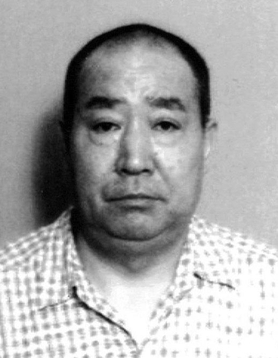
1940 - 2016
Yasutoshi Kamata
Summary
Name:
Nickname:
The Osaka Ripper / The Monster with 22 FacesYears Active:
1985 - 1994Birth:
July 10, 1940Status:
DeceasedClass:
Serial KillerVictims:
5Method:
StrangulationDeath:
March 25, 2016Nationality:
Japan
1940 - 2016
Yasutoshi Kamata
Summary: Serial Killer
Name:
Yasutoshi KamataNickname:
The Osaka Ripper / The Monster with 22 FacesStatus:
DeceasedVictims:
5Method:
StrangulationNationality:
JapanBirth:
July 10, 1940Death:
March 25, 2016Years Active:
1985 - 1994Date Convicted:
March 24, 1999bio
Yasutoshi Kamata was born on July 10, 1940, in the city of Ōzu, located in Ehime Prefecture, Japan. He grew up as the son of an inn proprietor. After growing up in Ōzu, he married a local woman. To support his family, he worked as a disposable chopsticks salesman at a local inn.
In 1960, after learning that his wife had been unfaithful, he took their two children and moved to Nishinari-ku. There, he made a living by selling stolen goods to women working in the restaurant industry. Kamata was considered kind and soft-spoken, with many of his business partners having a good opinion of him. However, he was also known to have sudden outbursts of anger.
During his time in Nishinari-ku, Kamata lived in various condominiums and apartments. He was known to lure women to these locations. Throughout his life, he had around 20 known addresses in Osaka.
murder story
On May 14, 1985, Yasutoshi Kamata's first victim was a 46-year-old housewife from Higashisumiyoshi-ku. She went to a bar using a fake name. Kamata met her there and invited her to join him for food and drinks. After the night ended, he took her to his condominium. When the woman resisted his advances, he strangled her. Her body was later found in a wooded area near the National Route 175 in Kobe.
His second victim was a 19-year-old college student who went missing on April 16, 1985. Kamata met her near the Tsūtenkaku tower and they were seen eating sushi together before he took her to his condominium. When she asked for money, Kamata became angry and strangled her. He then cut up her body using a saw and kitchen knife, putting the remains in a cardboard box. Her body parts were discovered the next day, leading to a police investigation.
On January 22, 1987, he targeted a 9-year-old girl walking home from school. Kamata lured her by asking for directions and then kidnapped her. After he failed to assault her due to her screams, he strangled her instead. He discarded her body in the mountains and called her school, demanding 30 million yen in ransom. Her remains were found months later.
After a prison sentence for theft, Kamata resumed killing. On July 24, 1993, he paid a 45-year-old snack bar employee to come to his home, where he strangled her. He dismembered her body and left the remains in the mountains. Her skeleton was found in April 1994 during a police search for another victim.
His fifth victim was a 38-year-old restaurant clerk whom he also killed by strangulation. He dismembered her body and threw away the pieces along a forest road. Her remains were found shortly after.
Kamata was arrested on February 23, 1995, for theft but was also linked to the serial murders. His fingerprints matched those of the person who had sent a taunting letter to the police. After linking him to the murders, Kamata confessed to killing and dismembering the second victim and later admitted to the other murders as well.
Kamata was put on trial in 1996. He initially confessed to all murders but later claimed he was innocent and blamed a friend. The trial concluded with Kamata being found guilty of the first two murders and sentenced to death in 1999. His conviction was repeatedly appealed but ultimately upheld.
Kamata remained on death row for 17 years. In 2016, he was executed by hanging at the Osaka Detention House.